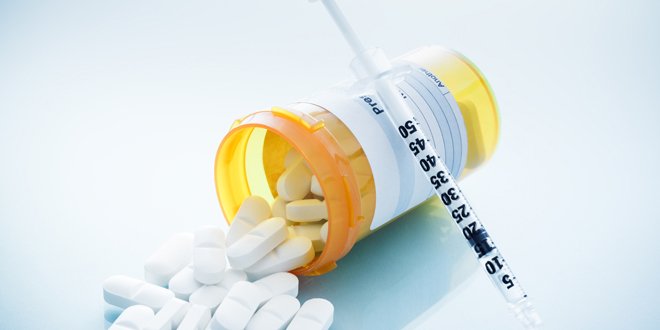
When first diagnosed
Many people hear ‘diabetes’ and think they need ‘insulin’ right off the bat. But if you have type 2 diabetes, you may not need insulin, at least not at first. In fact, for most people, when you’re first diagnosed, your healthcare team will initially recommend healthy behaviour interventions, such as eating healthy and following a regular exercise program, before they initiate medication. In some instances where blood sugar levels are excessively high, oral medication or insulin may be started.
Here are some ways to help keep your blood sugar levels at target when you have type 2 diabetes:
Follow a healthy diet
Many foods contain carbohydrates which break down into glucose when you eat them. This causes blood sugar levels to rise. That’s why it’s important to learn which foods cause blood sugar spikes more than others, and to balance your food choices.
Some foods such as non-starchy vegetables, meats and alternatives such as fish, legumes or cheese, have a minimal effect on blood sugar levels. The Glycemic Index (GI) can be an invaluable tool if you have diabetes because it helps to identify the effects of different carbs on blood sugar levels, which can aid in maintaining healthy targets. It is also important to take into consideration the portion size of the food. Even foods with a low glycemic index can increase blood sugar if you consume a lot of them.
Following a healthy diet plan doesn’t mean you have to spend hours in the kitchen either. Here are some kitchen shortcuts for a diabetes diet.
And here are more tips on preparing healthy meals when you have type 2 diabetes.
Be sure to speak with your healthcare provider to learn more about making healthy food choices when you have type 2 diabetes. It is also a good idea to meet with a dietitian when you are first diagnosed.
Exercise regularly
Exercise is another type of effective treatment for managing type 2 diabetes, since exercise lowers blood sugar levels. Being physically active can help you lose weight, lower your blood pressure, manage your cholesterol and help you deal with stress. It is recommended that people with type 2 diabetes do 150 minutes of moderate-to-vigorous-intensity aerobic exercise per week, as well as resistance exercises at least two times per week. Find out more about how exercise affects blood sugar, as well as how to make an exercise plan.
Low-impact exercise is one of the most accessible ways you can optimize your health and keep your blood sugar levels under control.
Here’s more information on resistance exercises and why they’re important for people with diabetes.
Here are 6 more exercises to try when you have type 2 diabetes.
When are medications needed?
If you’re still not meeting your blood sugar targets after implementing a healthy diet and exercise plan for 3 months, you may need oral medications for your type 2 diabetes. In some situations, if the blood sugar levels are high enough at the time of diagnosis, oral medication (e.g., metformin) or insulin may be started right away.
If lifestyle changes and metformin are not enough to help you reach your target blood sugar levels, other medications can be added.
What types of medications are used to treat type 2 diabetes?
- Sulfonylureas:decrease the amount of glucose released from liver and makes insulin more efficient
- Meglitinides:stimulate the pancreas to produce more insulin after a meal
- Thiazolidinediones:make the body’s insulin more efficient and decreases the amount of glucose released from the liver
- Alpha-glucosidase inhibitors:slow absorption of glucose into the bloodstream after eating
- DPP-4 inhibitors:increase the production and release of insulin from the pancreas after a meal and decrease the amount of glucose made by your body
- SGLT2 inhibitors:block reabsorption of glucose in the kidney, increase excretion of glucose and lower blood glucose levels.
- GLP-1 agonists:increase the production and release of insulin from the pancreas after a meal and decrease the amount of glucose released by the liver
- Insulins:replace insulin that is normally produced in the body which controls blood glucose
Download and print this list of type 2 diabetes medications here
The medication prescribed for you will be based on a variety of factors including side effects, cost and possible impact on other health conditions you may already have. Many of the newer medications are also beneficial not only for lowering blood sugar, but also for protecting against cardiovascular disease and progression of kidney disease. For more information on type 2 diabetes medications, read this article.

Medications for other conditions
Some people living with type 2 diabetes will also be prescribed medication for managing high blood pressure and/or high cholesterol.
Your diabetes healthcare team will determine the best treatment plan that will work for you. The important thing is that you take your medications as directed so that you can reach your blood sugar targets and reduce your risk of diabetes-related complications.
Weight loss surgery treatment
If you’re struggling with excess weight in spite of dietary and lifestyle improvements, you may be a candidate for weight loss surgery.
There are several different types of weight loss surgeries available. Get more information about current weight loss surgery options in Canada, although keep in mind you may not be a candidate for some of them. Be sure to discuss weight-loss options with your doctor at your next diabetes-related visit.

